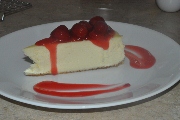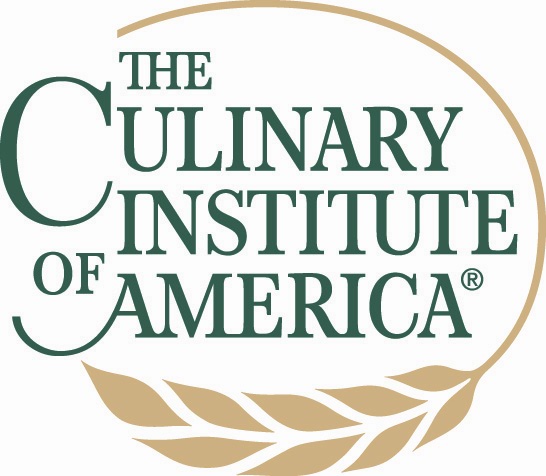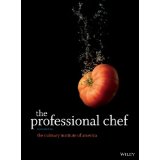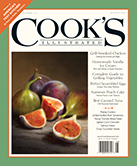Welcome to the initial invocation of the Cake is Food Culinary and Pastry Arts page. Over the next few months, more sections and more recipes will be added. This page is very much "under construction."
All of the recipes in this section are in PDF. You can get Adobe's free read here.
Baking recipes specify amounts by weight, both metric and English. Furthermore, the baker's percentage is given in the first column.
All recipes provide the metric weight of all ingredients. Currently, some recipes also have English weights whereas others contain English volumes. Over time, the recipes will be made more consistent.
Baking
CheesecakeCheesecakes are somewhat of a specialty of mine and I can't count how many I've made over the past 20 years and everyone has always raved about how good they are. It's a little ironic because I haven't liked them all that much. My recipe has changed often over the years, however, and now I actually like them. Well just a little. And either no one has noticed or people are too polite to complain because every one still raves. (The last change, by the way, was a switch from sour cream to heavy cream.) When making cheesecakes, the most important thing to remember is that cheesecakes are not cakes. They are custards. As such, I think it is critically important to cook them in a water bath. I don't think this step is optional if you want good results. Because the cake, I mean custard, is cooked in a water bath, don't use a spring form pan. Use a regular cake pan. If you prepare the pan correctly, there won't be any problem turning the cake, I mean custard, out onto a cake board. Oh, and by the way, don't bother trying to use the toothpick-in-the-center trick to determine when it's done. It won't work. This is a custard, not a cake. Would you stick a toothpick in chocolate pudding to test if it were done? Oh yeah, because cheesecakes are not cakes, do not apply any of the high altitude adjustments discussed below. This recipe will work just fine as is to at least 7,000 feet |
|
High Altitude BakingAs anyone who lives at high altitude knows, baking at altitude can be a challenge. The low air pressure, low humidity, and low boiling point can have a dramatic effect on baked goods, especially cakes. In fact, take a look at most commercial boxed cake mixes. They usually contain special instructions for use at high altitudes. Cakes have a tendency to collapse. When people see the results, they assume that the cake did not rise and thus did not have enough leavening. So they add more the next time. The results are the same if not worse. In actuality, the cake rose too much due to the lower ambient air pressure. The over rising results in a rupture of the gluten strands that provide the cake its structure. Because the structure has been compromised, the cake collapses. The trick of course is to lower the amount of leavening. The following table provides general guidelines for recipe adjustment. Remember though, these are only guidelines and different products need different types of adjustments. Don't be afraid to experiment.
|
High Altitude RecipesThe following recipes have been adjusted for 7,000'. |
||||||||||||||||||||
|
|||||||||||||||||||||
CakesThe table above works very well for cakes. For most cakes, there's no short cut. Follow the table. You can also start the temperature at about 25 degrees higher for the first few minutes. Make sure to turn the temperature back down to that specified in the recipe, unless of course you like burnt, crispy tops to your cakes. BreadsThe above table works well for breads as well. I have found, however, that I can get perfectly good results by simply increasing the amount of flour. Other tips that help: Quick BreadsThe important factor when making quick breads is to reduce the amount of leavening agents. The corn bread recipe to the right is equivalent to that used by the CIA except that it uses half the amount of baking powder. (Note that this does not match the above table.) I probably shouldn't admit to this but the first time I made the CIA corn bread in Colorado Springs, I didn't make any adjustments. The batter actually "boiled over" and half the batter ended up on the oven floor. Except for the mess, it was actually pretty cool to watch. It was like a masa volcano. CookiesFor the most part, I have found that no adjustments are necessary for cookies. Simply follow the recipe as written. |
|
||||||||||||||||||||
Miscellaneous Recipes
Macaroni and CheeseMy mother was known for her Macaroni and Cheese. Simple, great cheddar flavor and a crispy, golden brown top. Everyone in the family loved it. Me included. It was often the star of holiday and Sunday dinners. At the risk of raising the ire of my family though, I prefer this mac and cheese. The technique is certainly more complicated but I like the layers of flavors it produces. My mother's version used only cheddar cheese. Extra sharp of course. The recipe given here uses three types of cheese; extra sharp cheddar, asiago, and parmigiano regianno. Make sure to use a high quality Parmigiano Regianno or the end product will suffer. It's better to leave it out than to use a cheap Parmesan. Never use the crap in the green can! As an alternative, I occassionaly will add either some fontina or gorgonzola. |
Macaroni and Cheese |
Broccoli Cheddar SoupAlmost every Sunday for the better part of a year, I would have a salad and a cup of broccoli cheddar soup at the Cheesecake Factory. I think it has the perfect balance of flavors. Much more so than either Jason's Deli or Panera Bread whose soups I think are too heavy on the cheese. The recipe to the right is my attempt to copy the Cheesecake Factory's version. |
Broccoli Cheddar Soup |
Peanut ButterI never understood why someone would want to make peanut butter. After all, what's wrong with JIF? Then one day I made a batch of as part of an exercise. Now I understand. It simply taste better. If you have a food processor, it's incredibly simple, takes only a few minutes, and as a bonus, has no preservatives. One confession. The amount of honey in the recipe is only an estimate. I've never actually measured it. I buy "Busy Bee" brand honey which like a lot of honey brands comes in a plastic, bear shaped bottle. When I add the honey, I just give one good squeeze of the bear. One may wonder why I use 15 ounces of peanuts when they typically come in 16 ounce jars. I once made a batch explicitly to make peanut butter cookies. I withheld one ounce to rough chop to add to the cookies. When the batch was complete, I noticed that the yield perfectly fit into a 2 cup SnapWare container that I have. I've been using 15 ounces ever since. So what do I do with the other ounce? I eat it. |
Peanut Butter |
The Culinary Institute of AmericaThe Culinary Institute of America proclaims itself as "The World's Premier Culinary College" and is without a doubt a leader in the food industry in the United States, if not the world. Many well known celebrity chefs and Food Network stars are CIA graduates. Besides the associate and bachelor degree programs, the CIA also offers a set of wonderful classes for food enthusiasts. These classes, referred to as Boot Camps, range from two to five days in length and cover a myriad of topics. Thus far, I've been fortunate to have attended five of these boot camps with a sixth planned for the future. A typical day starts at 7:00am with a lecture and an overview of the day's assignment. The class work is followed by hands on production in one of the CIA's professional kitchens. For culinary classes, the result of this production is lunch shared by the class, served buffet style. (For baking and pastry classes, lunch is provided by full time students as part of one of their classes.) After lunch the instructor reviews the day's production, which is followed by an extra activity of some type. This may be a wine tasting, lecture, a behind the scenes tour of the campus, or some other type of activity related to the specific boot camp. For more information, please go to http://enthusiasts.ciachef.edu/boot-camps/ |
|
Resources
BooksThe serious amateur and professional alike, there is only one required cookbook. The Professional Chef by the Culinary Institute of America. The reasons are simple. First, it covers just about every subject from appetizers to desert. Second, the recipes are delicious. Finally, and most importantly, it thoroughly covers the techniques and basic principles of cooking. It gives one the tools needed to cook anything, without the need for recipes making the second point moot. Artisan Breads at Home by Eric Kastel. I had the pleasure of attending a one day class with Eric who is a Certified Master Baker. The class was a lot of fun and we made a lot of bread in a very short time. The only problem is that now I'm addicted to the dinner rolls. Plain, simple, delicious. Some other favorites: |
|
MagazinesMy favorite magazine has to be Cooks Illustrated. Again, it's heavy on principles. Each article explains why a recipe works, not just how to execute it. David Chang of Momofuku has just created a new quarterly journal, Lucky Chicken. Each issue covers a single topic. I haven't decided whether or not I like this format or not but it's hard not to like a magazine with two articles by Harold McGee. Be forewarned that this journal contains adult language, but not by Harold of course. |
|
InternetKing Arthur Flour has great products and ingredients. For those with Celiac or other gluten intolerances, the Gluten Free Mall has great products; cookies, pastas, and just about anything else you can think of. For baking supplies try Bake Deco and InstaWares for general supplies. Chef's Catalog is another great site. If you're in Colorado Springs, check out their show room at Centennial and 30th. If you're in Colorado Springs, you can't beat United Restaurant Supply just off of Platte and Wooten. I stop by whenever I'm in town. And of course, there's always Amazon. |
|


.jpg)



